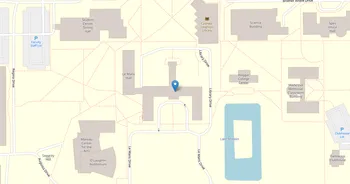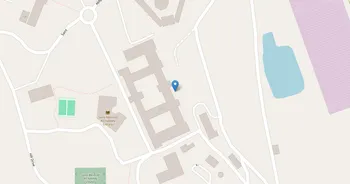Rose-Hulman Institute of Technology (RHIT) : Overview, Courses, Scholarships & Rankings
About Rose-Hulman Institute of Technology
Rose-Hulman is known for hands-on study in engineering, science, computing, and math, where tough courses meet real problems and clear communication. Labs, makerspaces, and machine shops pair with a well used library, tutoring and writing help, plus health and counseling services.
Campus life is collaborative and a little nerdy, with clubs, design teams, music and theater, intramurals, and time outside. And the Fightin' Engineers vibe shows up in build nights and friendly rivalries. Career prep runs through co-ops, internships, employer visits, and alumni mentors. Terre Haute adds a small city feel with coffee shops, arts, river trails, volunteering, and chances to work with regional companies. It feels down to earth and quietly ambitious.
Key Institutional Details
Contact & Profile
Academic & Institutional
Academic Programs & Fields of Study
Rose-Hulman Institute of Technology (RHIT) offers 26 degree programs across 8 major academic fields, graduating approximately 501 students annually. The most popular fields by graduate volume are Engineering (12 programs, 332 graduates), Computer & IT (2 programs, 98 graduates), Eng. Technologies (1 programs, 22 graduates), Mathematics (1 programs, 18 graduates) and Physical Sciences (2 programs, 11 graduates). Explore program details, award levels, and graduate demographics below.
Engineering (12 programs, 332 graduates)
Engineering Sciences and Applied Technology Solutions
| Program Name | Graduates | Gender Distribution | Award Levels | CIP Code |
|---|---|---|---|---|
| Mechanical Engineering | 114 |
|
Bachelor's
|
14.1901 |
| Electrical and Electronics Engineering | 41 |
|
Bachelor's
|
14.1001 |
| Chemical Engineering | 39 |
|
Bachelor's
|
14.0701 |
| Civil Engineering | 31 |
|
Bachelor's
Master's
|
14.0801 |
| Software Engineering | 29 |
|
Bachelor's
|
14.0903 |
| Computer Engineering | 27 |
|
Bachelor's
|
14.0901 |
| Biomedical Engineering | 24 |
|
Bachelor's
|
14.0501 |
| Laser and Optical Engineering | 13 |
|
Bachelor's
Master's
|
14.1003 |
| General Engineering | 7 |
|
Bachelor's
|
14.0101 |
| Engineering Physics | 5 |
|
Bachelor's
|
14.1201 |
| Environmental Health Engineering | 1 |
|
Master's
|
14.1401 |
| Electrical and Computer Engineering | 1 |
|
Master's
|
14.4701 |
Computer & IT (2 programs, 98 graduates)
Computer Science, Information Technology and Cybersecurity
| Program Name | Graduates | Gender Distribution | Award Levels | CIP Code |
|---|---|---|---|---|
| Computer Science | 96 |
|
Bachelor's
|
11.0701 |
| Computer and Information Sciences | 2 |
|
Bachelor's
|
11.0101 |
Eng. Technologies (1 programs, 22 graduates)
Applied Engineering Technologies and Technical Support
| Program Name | Graduates | Gender Distribution | Award Levels | CIP Code |
|---|---|---|---|---|
| Industrial Engineering Management | 22 |
|
Master's
|
15.1501 |
Mathematics (1 programs, 18 graduates)
Mathematical Sciences, Statistics and Computational Analysis
| Program Name | Graduates | Gender Distribution | Award Levels | CIP Code |
|---|---|---|---|---|
| Mathematics | 18 |
|
Bachelor's
|
27.0101 |
Physical Sciences (2 programs, 11 graduates)
Chemistry, Physics and Earth Sciences Research
Biological Sciences (4 programs, 9 graduates)
Life Sciences, Biotechnology and Biomedical Research
| Program Name | Graduates | Gender Distribution | Award Levels | CIP Code |
|---|---|---|---|---|
| Biology and Biological Sciences | 3 |
|
Bachelor's
|
26.0101 |
| Molecular Biochemistry | 3 |
|
Bachelor's
|
26.0205 |
| Biochemistry | 2 |
|
Bachelor's
|
26.0202 |
| Biomathematics and Computational Biology | 1 |
|
Bachelor's
|
26.1199 |
Interdisciplinary (3 programs, 8 graduates)
Cross-Disciplinary Studies and Integrated Research Programs
| Program Name | Graduates | Gender Distribution | Award Levels | CIP Code |
|---|---|---|---|---|
| Data Science | 6 |
|
Bachelor's
|
30.7001 |
| Global Studies | 1 |
|
Bachelor's
|
30.2001 |
| Computational Science | 1 |
|
Bachelor's
|
30.3001 |
Social Sciences (1 programs, 3 graduates)
Sociology, Anthropology and Political Science Studies
| Program Name | Graduates | Gender Distribution | Award Levels | CIP Code |
|---|---|---|---|---|
| Economics | 3 |
|
Bachelor's
|
45.0601 |
Admission Requirements & Test Scores
Comprehensive overview of admission criteria, standardized test score ranges, and application requirements for prospective students at Rose-Hulman Institute of Technology (RHIT).
Application Requirements
Data based on IPEDS for 2022-2023 academic year. Test score ranges represent the middle 50% of admitted students (25th-75th percentile). Requirements may vary by program.
Tuition, Fees & Estimated Costs
Overview of tuition rates, housing, and other annual education expenses for undergraduate and graduate students
Financial Aid & Student Support
Summary of scholarships, grants, student loans, and financial aid statistics for undergraduate students
Student Success Metrics
Graduation rates and post-graduation earnings to help assess student outcomes and long-term value of education.
Loan Burden & Repayment Outcomes
Breakdown of loan repayment rates and student debt levels by income and dependency status.
Frequently Asked Questions
Find answers to the most common questions about Rose-Hulman Institute of Technology (RHIT)
How much does it cost to attend Rose-Hulman Institute of Technology (RHIT)?
The annual tuition at Rose-Hulman Institute of Technology (RHIT) is $54,174 for in-state students. When including room and board, books, and other expenses, the total estimated cost is approximately $75,390 for in-state students. Additional costs include room and board $17,718 and books and supplies $1,500.
Data based on IPEDS program completions for 2022-2023 academic year. Tuition and cost estimates are approximate and may not include all fees, personal expenses, or transportation costs.
What academic programs and degree levels does Rose-Hulman Institute of Technology offer?
Rose-Hulman Institute of Technology (RHIT) offers 26 academic programs across 8 major fields of study, with available degree levels: Bachelor's, Master's.
Most popular program areas include:
- Engineering Sciences and Applied Technology Solutions (12 programs)
- Computer Science, Information Technology and Cybersecurity (2 programs)
- Applied Engineering Technologies and Technical Support (1 programs)
- Mathematical Sciences, Statistics and Computational Analysis (1 programs)
- Chemistry, Physics and Earth Sciences Research (2 programs)
Data based on IPEDS program completions for 2023-2024 academic year. Numbers reflect programs where students graduated, not all offered programs.
What is the acceptance rate for Rose-Hulman Institute of Technology?
Rose-Hulman Institute of Technology (RHIT) has an 72.8% acceptance rate and a 14.5% yield rate, making it selective.
Admission statistics breakdown:
- Total applicants: 5,384
- Students admitted: 3,920
- Students enrolled: 568
Data based on IPEDS for 2022-2023 academic year. Admission statistics may vary by program and application cycle.
What financial aid and scholarships are available at Rose-Hulman Institute of Technology?
Rose-Hulman Institute of Technology (RHIT) provides financial aid to 28% of first-time, full-time students, with average grants of $30,210 and average loans of $12,534.
Average financial aid amounts by type:
- Pell grants: $4,920
- State/Local grants: $6,654
- Institutional grants: $29,201
- Federal loans: $5,266
The university supports 594 students with grants and 295 students with loans annually.
Data based on IPEDS for 2022-2023 academic year. Financial aid amounts and percentages may vary by program, enrollment status, and individual circumstances.
What is the average salary for Rose-Hulman Institute of Technology graduates?
Rose-Hulman Institute of Technology (RHIT) graduates earn a median salary of $85,935 after 6 years and $101,253 after 10 years.
The salary range 10 years after graduation spans from $80,529 (25th percentile) to $124,107 (75th percentile).
Data based on IPEDS for 2022-2023 academic year. Salary data reflects graduates who received federal financial aid (approximately 60% of all graduates). Actual earnings may vary significantly based on program, location, and individual circumstances.
Related Universities




Found something useful? Help others discover it too! Share with friends, on social media, or save for later - every share helps someone find the information they need.